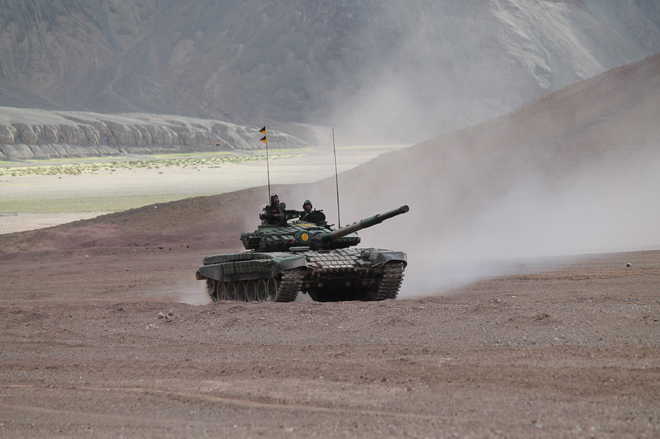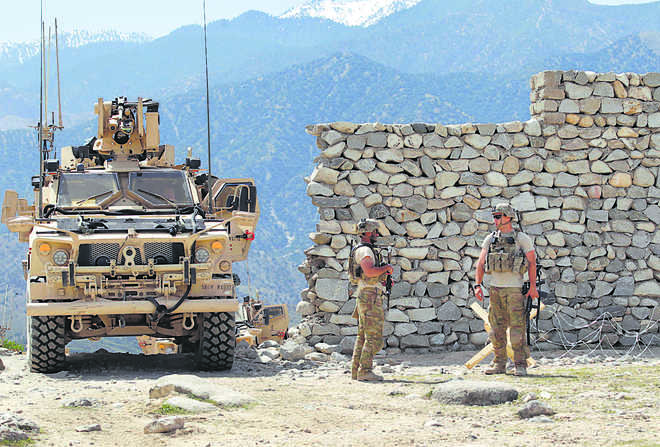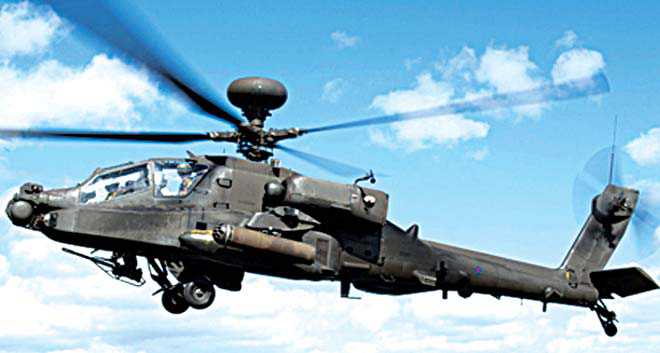Ajay Banerjee
Tribune News Service
New Delhi, August 20
In the past decade or so, India has “militarily tailored” its defences along the Himalayas and China could be surprised if an armed clash breaks out.A repeat of the 1962 debacle, when Peoples Liberation Army of China, with a few exceptions, literally overran the Indian military defence, is just not possible in 2017, is an assessment in India.In early 2004, India stepped up efforts to secure areas along the 3,488-km Line of Actual Control (LAC) — the de facto boundary. Every possible route of ingress is continuously “war gamed” by the Army. “War-gaming” is an art of predicting future outcomes of military postures of rivals, fine-tuned by regular military exercises with the IAF, study of satellite imagery and available inputs.Since 2004, around 60,000 troops have been added along the LAC. This includes three new Army divisions and three additional brigades. Part of these form the newly raised Mountain Strike Corps. As of now, India has some 14 divisions (13,000-14,000 troops in each) — facing China that has 15-16 divisions facing India.Over the past five years, a few regiments of tanks have been added to the mechanised forces at specific places in eastern Ladakh and northern Sikkim. In Arunachal Pradesh, India has added troops. It has converted six British-era mud-paved runways into fully paved landing grounds for the IAF. One of these can be a forward base for the Sukhoi-30 MKI fighter jets. Leh has an airfield with abilities to launch 24×7 strikes. Kargil and Thoise in Ladakh have functional airfields.(Follow The Tribune on Facebook; and Twitter @thetribunechd)A complement of Sukhois at Hashimara (at the base of Bhutan) has been tasked to take on offensive in Chumbi Valley — the Doklam plateau stand-off is in the same valley. Tezpur in Assam has Sukhoi tasked to take an offensive role, so is Bareilly in Western UP. A squadron (18 planes) of MiG 29 jets has been added to Adampur (Punjab) to swing over Himachal Pradesh into Tibet.Modern US-procured planes C-130-J add to the fleet of Russian AN 32. Within hours, fully equipped troops can be dropped in Arunachal Pradesh and eastern Ladakh.The Indian stance along the LAC is not akin to Jawaharlal Nehru’s 1960-1961 “forward policy”, but it mandates holding on to own claim lines. The “forward policy”, as explained by Neville Maxwell in his book “India’s China war”, entailed taking up permanent positions along the high ridgelines of eastern Ladakh.There are 12 spots of major disputes along the LAC besides several minor ones. The sanctity of these spots is maintained by getting real-time satellite updates on Chinese movement; countering their LAC patrols with own patrols; and maintaining a level of firepower. The Army and the Indo-Tibetan Border Police (ITBP) have been tasked with conducting joint patrols along the LAC at designated points, identified by the high-power China Study Group.
What it is About
It is an art of predicting future outcomes of military postures of rivals, fine-tuned by regular military exercises with the IAF, study of satellite imagery and available inputs.Indian preparation
- Since 2004, around 60,000 troops have been added along the 3,488-km Line of Actual Control
- India has around 14 divisions (13,000-14,000 troops in each) facing China that has 15-16 divisions facing India
- Over the past five years, a few regiments of tanks have been added to the mechanised forces at specific places in eastern Ladakh and northern Sikkim
- In Arunachal Pradesh, India has added troops and converted six British-era mud-paved runways into fully paved landing grounds for the IAF
AC jackets for Indian Special Forces soonPanaji: Trials for introducing air-conditioned jackets for the Special Forces soldiers are on, former Defence Minister and Goa Chief Minister Manohar Parrikar has said. “In a Special Forces operation, there is extensive exercise. Body heats up, he (soldier) is very uncomfortable. At that time if he has an AC jacket, he is more comfortable. Trial is on,”said Parrikar, who served as the Defence Minister between 2014 and 2017. IANS












































































